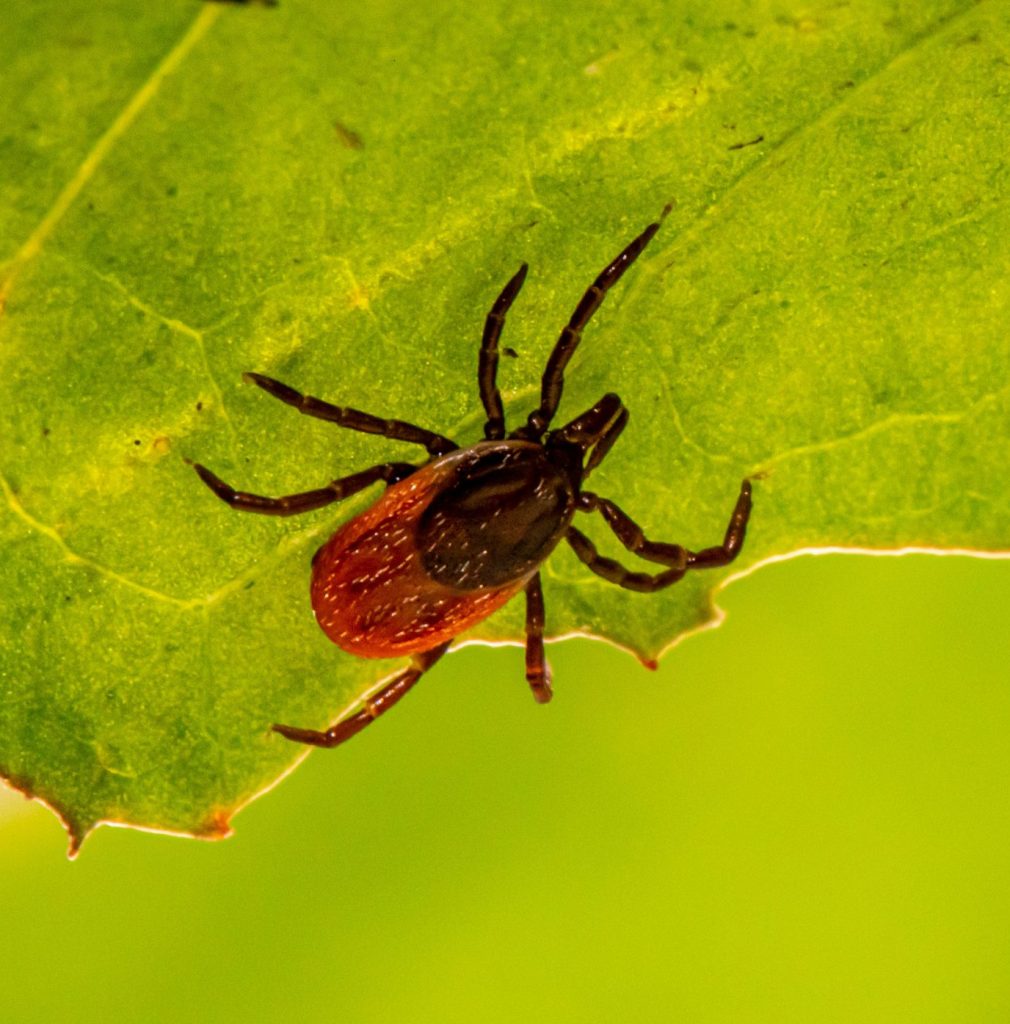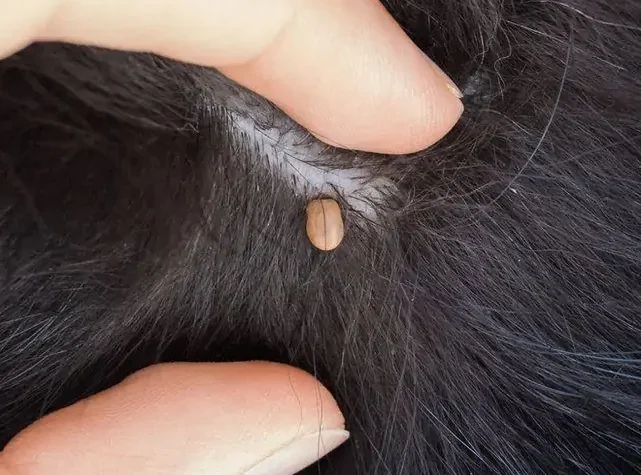Ticks in dogs
What are ticks?

Ticks are small, spider-like parasites that can attach themselves to the skin of people and animals and then feed on their blood. Ticks live mainly near trees, bushes, in tall grass or among dead leaves. A bite from a tick is often harmless and painless, but if the tick carries a pathogens, it can infect the host. Well-known diseases that ticks can transmit are Lyme, Ehrlichiosis and Babesiosis.
How do you recognise a tick on your dog?
A tick bite in dogs is a regular occurrence, but how do you recognise a tick bite?
- Ticks can bite all over a dog’s body. However, we see them most often on the head, ears, neck or legs.
- A tick is a small, spider-like creature, with a brown colour. The head is located under the dog’s skin after the bite, the 6 legs and body most of the time remain visible on top of the skin.
- After a tick fills up with blood, it grows larger and often changes colour. A sucked-in tick can become lighter brown in colour or grey.

How do you remove a tick from a dog?
Is your dog bitten by a tick? Make sure you remove the tick as quickly as possible, since your dog may get sick from the tick bite. This occurs after only 16 to 24 hours, so there is urgency.
- Locate the tick bite by pushing the dog hairs well to the side
- Do not use disinfectant on the tick because as a reaction, the tick may empty its stomach contents increasing the chances of transmitting a pathogen
- Place a tick remover around the tick, as close to the dog’s skin as possible. Want to remove the tick without tick remover? You can also use tweezers
- Try using a twisting motion to loosen the tick and pull it off the dog’s skin. as tempting it may seem to crush the tick, don’t do this! This could release the pathogens. Pull the tick out of the skin very gently so that you remove it entirely
Always check whether you have removed the tick’s head and legs. If not, try it again. Otherwise, your dog may still develop symptoms.
A tick remover is available at our clinics. If you do not like to remove the tick yourself, we will of course gladly help you!
Preventing ticks in dogs
To prevent tick bites, you can purchase several products, such as a anti-tick collar, anti-tick drops and anti-tick tablets. You can use most of these preventively.
Tick collar dog
Many dog owners give their dogs a tick collar, which repels and kills nasty bugs such as ticks. A tick collar is a dog collar that contains active substances. Your dog doesn’t notice anything from these substances, but insects absolutely cannot stand them. Thanks to this collar, ticks stay away.
Tick drops dog (pipette)
Most products against fleas also work against ticks. That is why this remedy is the most commonly used. These products come in pipette form, or drops, which you apply to your dog’s skin. In most cases, these products work for 1 month and should be repeated thereafter.
Tick tablet dog
An anti-tick remedy also comes in pill form (e.g. Nexgard). You can give this to your dog as a snack, it also works for a month.
The above products are available at our clinics.
Besides treating preventively with an anti-tick medicine, we also recommend checking your dog daily for ticks (bites) so you can take action in time. A ‘fresh’ tick bite is often nothing more than a dark lump on the skin. Only when the tick has sucked up the blood does its body swell. Often the tick is only then noticed. In addition, don’t forget to de-flea and deworm your dog regularly. This is also an important part of preventive care.
Consequences of a tick bite
Ticks can carry several pathogens that can be dangerous for your dog. There is even a chance that the dog could be infected with several diseases at once. If the tick is removed within 24 hours and in the right way, the risk of infection is small.
Diseases that can be transmitted by ticks include:
- Lyme disease
- Babesiosis
- Ehrlichiosis
- Anaplasmosis
Help, my dog has a tick!
Do you see your dog’s tick bite too late or have you failed to remove the tick? Keep an extra close eye on your dog’s health. If your dog starts to show the underneath symptoms, always make sure you contact us:
- Fatigue
- Low appetite
- Fever
- Pains
- Stiff joints
We will check your dog for tick-borne diseases. Then we will prescribe the appropriate treatment so that your four-legged friend will soon be back to normal.


